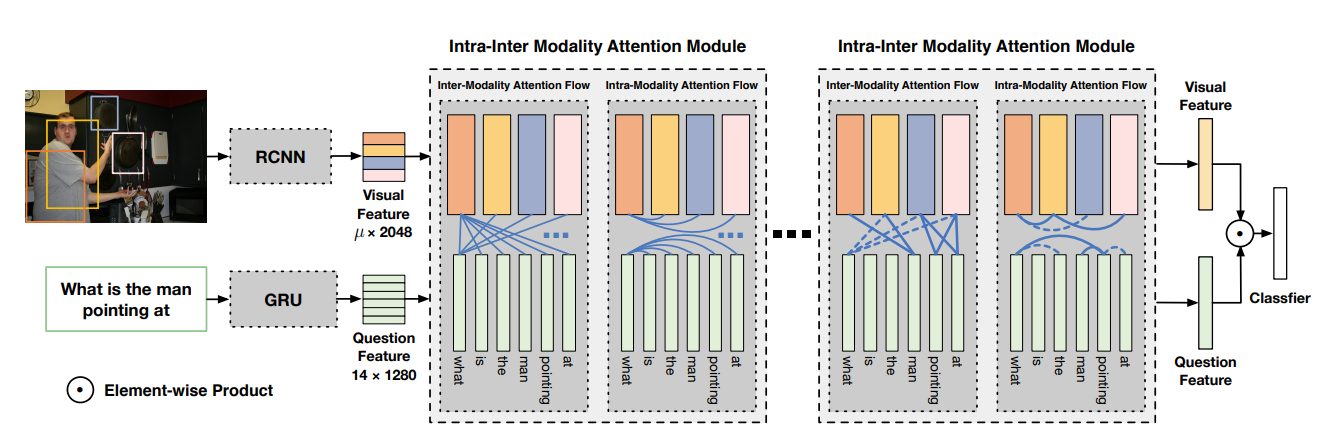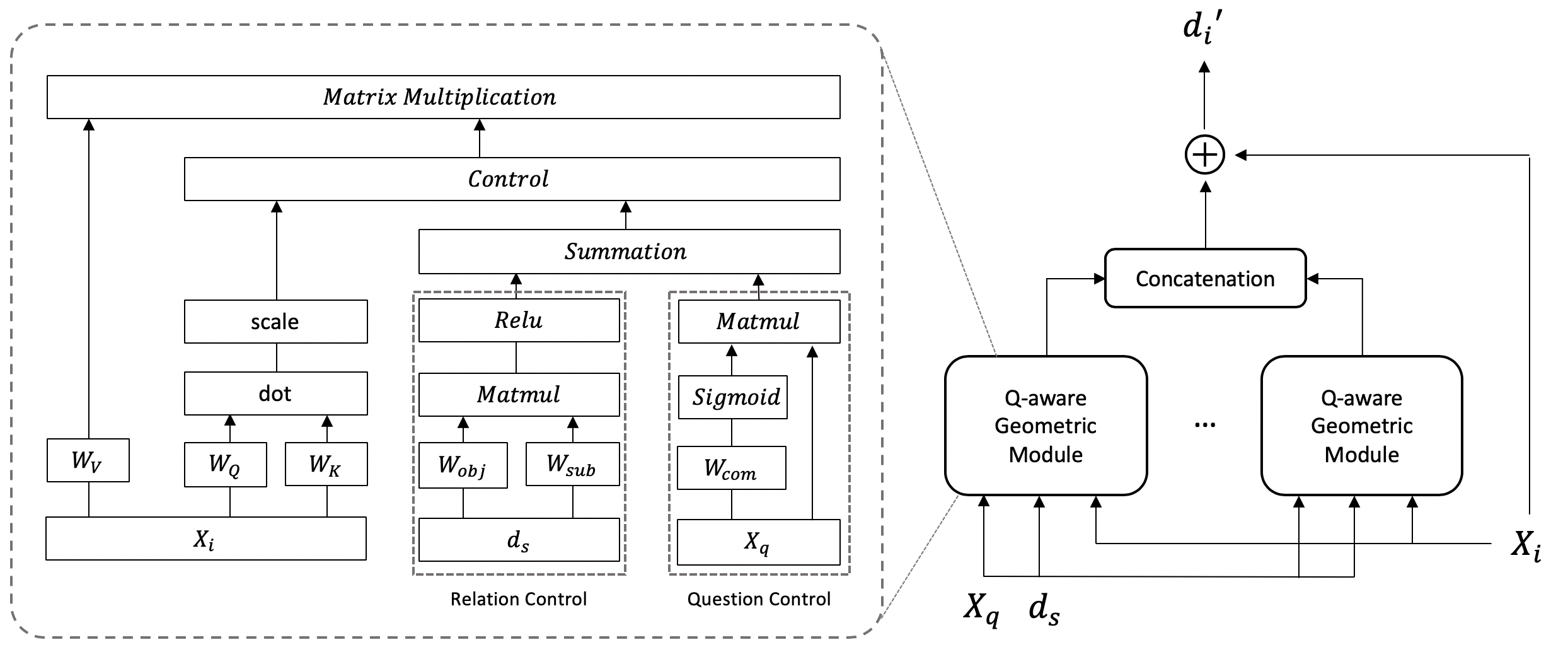This is my coursework for DM6190-SPECIAL TOPIC Assignment 1. This repository contains the reimplementation from the paper titled 'Dynamic Fusion with Intra- and Inter-modality Attention Flow for Visual Question Answering' which was published on CVPR 2019. I took reference from KaihuaTang/VQA2.0-Recent-Approachs-2018.pytorch and reimplemented the model codes instead. The reason for this is I wanted to pay more attention to the model instead of the data preprocessing which is quite standard and easily found on the net. More details have been noted in the submitted assigment report.
To improve upon the original model, I hereby proposed the Q-aware relational network. This network is added to the the end of the original DyIntraMAF module. It provides the original model the relational capability in order to utilize the position of each image region to answer relational question. Please refer to the report for more details.
To download the dataset, please follow instruction from Cyanogenoid/vqa-counting.
- Pytorch 1.0.1
- Cuda V9.1.85
- Python 3.7.3
To train the model, make sure that you have downloaded the dataset following the instruction from Cyanogenoid/vqa-counting. Then, to train the network, you will need to run the command below:
python train.py
To resume the training
python train.py --resume logs/[name of the model].pth
If you want to run my own implementation you can do the following steps.
- To load it without q-aware network,
- download pretrained model from pretrained_dfaf_parallel,
- put it in logs folder,
- go to config.py
- change exp_id to 1
or...
- To load it with q-aware network,
- download pretrained model from pretrained_dfaf_parallel_with_q-aware,
- put it in logs folder,
- go to config.py
- change exp_id to 2
Note: At the time of this writing, the pretrained_dfaf_parallel_with_q-aware is still training and the result is close to 54% at epoch 32.
Once you have done the setup, run the following command to generate the test result with the corresponding pretrained model
python train.py --test --resume logs/[name of the model].pth
If you just want to train the model, you can simply run the following command after you have confirmed the setup.
python train.py
To test the model on the test standard dataset, run the command below:
python train.py --test --resume logs/[name of the model].pth
- Peng Gao, Zhengkai Jiang, Haoxuan You,Pan Lu, Steven Hoi, Xiaogang Wang, Hongsheng Li - Original Paper - Dynamic Fusion with Intra- and Inter-modality Attention Flow for Visual Question Answering
- Kaihua Tang - Initial implementation - VQA2.0-Recent-Approachs-2018.pytorch
- Kaihua Tang
- Peng Gao
- Zhengkai Jiang
- Haoxuan You
- Pan Lu
- Steven Hoi
- Xiaogang Wang
- Hongsheng Li

